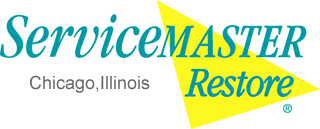A crawl space can be an extremely useful area in a residence. In fact, many homeowners use their crawl spaces for extra storage. At the very least, a crawl space can add an insulation buffer under or on the side of the house. It can also provide a handy area for tradespeople to access pipes and structural elements. However, crawl spaces can also suffer from water damage and flooding.
How Water Damage Gets In Your Crawl Space
With all the benefits of a crawl space comes one very real concern: moisture. Because crawl spaces are rarely visited and often exposed to certain elements, they can develop water infiltration and flooding problems. Over time, such issues can lead to significant water damage, fostering an environment conducive to mold growth and building damage.
For example, a crawl space under a house may succumb to regular bouts of flooding during heavy rains or when snow melts. At first, water may only seep in a little bit. However, as the area of water infiltration gets bigger, the amount of water will also increase. Eventually, full flooding of the crawl space can become a frequent occurrence, opening the door to everything from pest attraction to cracked foundations.
Because crawl space water damage can affect the function and property value of a home, the problem should be identified and rectified immediately with professional help from a company like ServiceMaster of Lincoln Park.
Signs of Water Damage in a Crawl Space
Homeowners wondering if they have water damage should take time to investigate the area, looking for common indicators of potential water damage. Some of the red flags of a flooded or overly damp crawl space include:
- Mold odors: These unpleasant smells may only be noticeable in the crawl space itself, or they may rise into the upper areas of the home.
- Sagging floorboards: The floorboards above the crawl space may begin to sag, indicating rotting wood beneath the floor. If not caught in time, the affected floorboards may have to be completely replaced.
- Pest infestation: Pests such as rodents and bugs may start to come into the house in larger numbers, particularly after storms.
- Dampness: A water-damaged crawl space will obviously be wet and may even have standing pools of water most of the time.
- Backed-up pipes: If you notice a sewage smell coming from the crawl space, this could indicate a potential backup in the system due to flooding.
All of these signs are good reasons to contact ServiceMaster of Lincoln Park because the issue will not solve itself. In fact, it is likely to worsen, which can lead to more serious and expensive remediation and repairs.
Preventing Crawl Space Moisture and Water Damage
In order to prevent moisture from ruining a perfectly good crawl space, homeowners can take a few key steps:
- Install a working drain and sump pump into the crawl space to remove water efficiently from the area
- Install a working dehumidifier into the crawl space and check it frequently, particularly after rains
- Correct any structural defects that are leading to water build-up in the crawl space area
- Fix cracked foundations and leaking pipes to reduce moisture
Crawl spaces have plenty of advantages, but only when they are free from water damage. If you need assistance bringing your crawl space back from moisture issues, call the team at ServiceMaster of Lincoln Park today.

